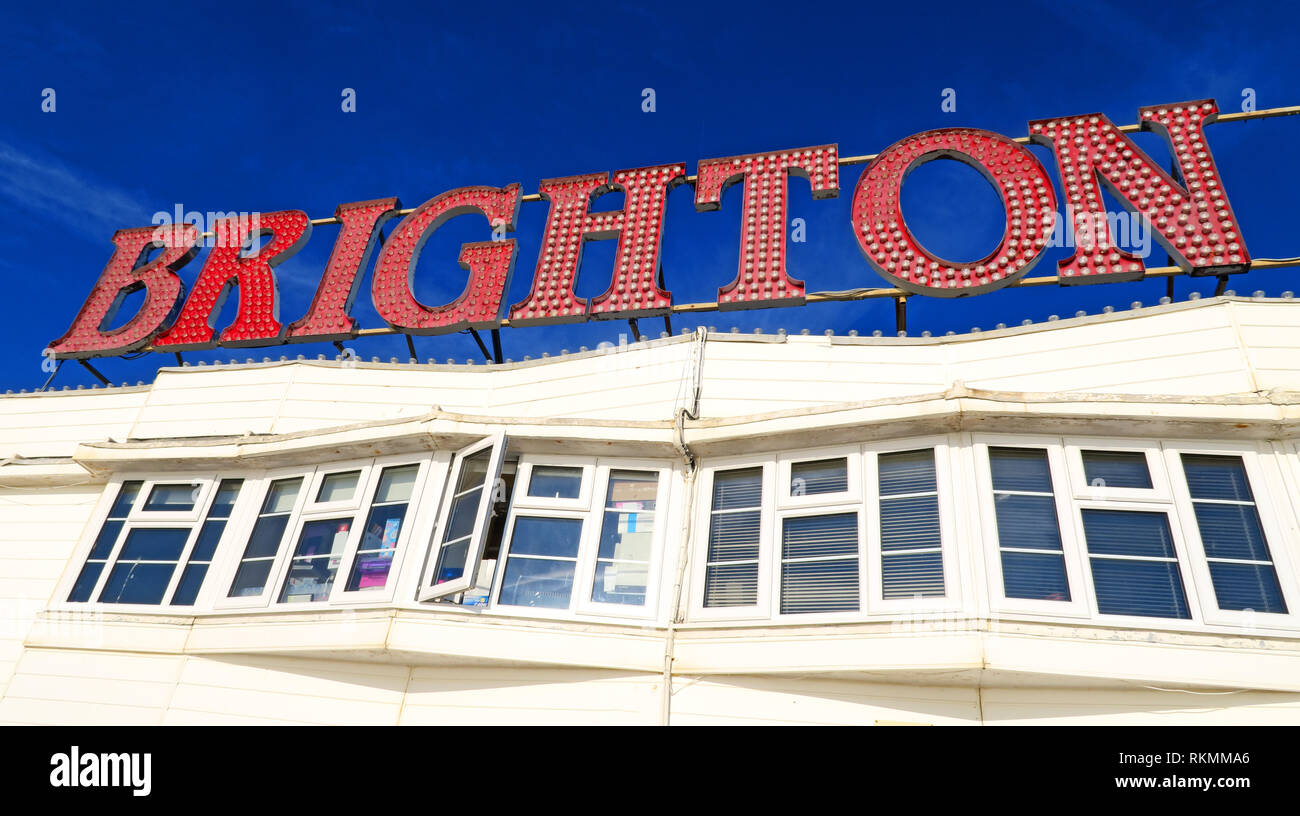English seaside, Brighton Pier, Madeira Drive, Brighton, East Sussex, South East England, UK, BN2 1TW

Image details
Contributor:
Tony Smith / Alamy Stock PhotoImage ID:
RKMMA6File size:
41.8 MB (1.5 MB Compressed download)Releases:
Model - no | Property - noDo I need a release?Dimensions:
5112 x 2856 px | 43.3 x 24.2 cm | 17 x 9.5 inches | 300dpiDate taken:
10 May 2017Location:
Madeira Dr, Brighton BN2 1TWMore information:
Brighton is a seaside resort on the south coast of England that is part of the city of Brighton and Hove, located 47 miles (76 km) south of London. Brighton's location has made it a popular destination for tourists, renowned for its diverse communities, quirky shopping areas, large cultural, music and arts scene and its large LGBT population, leading to its recognition as the "unofficial gay capital of the UK". Brighton attracted 7.5 million day visitors in 2015/16 and 4.9 million overnight visitors, and is the most popular seaside destination in the UK for overseas tourists. Brighton has also been called the UK's "hippest city", and "the happiest place to live in the UK" In 1985, the Borough Council described three "myths" about Brighton's economy. Common beliefs were that most of the working population commuted to London every day; that tourism provided most of Brighton's jobs and income; or that the borough's residents were "composed entirely of wealthy theatricals and retired businesspeople" rather than workers. Brighton has been an important centre for commerce and employment since the 18th century. It is home to several major companies, some of which employ thousands of people locally; as a retail centre it is of regional importance; creative, digital and new media businesses are increasingly significant; and, although Brighton was never a major industrial centre, its railway works contributed to Britain's rail industry in the 19th and 20th centuries, particularly in the manufacture of steam locomotives. Since the amalgamation of Brighton and Hove, economic and retail data has been produced at a citywide level only. Examples of statistics include: Brighton and Hove's tourism industry contributes £380m to the economy and employs 20, 000 people directly or indirectly; the city has 9, 600 registered companies; and a 2001 report identified it as one of five "supercities for the future". In the past couple of years tourists to Brighton and Hove have fallen.